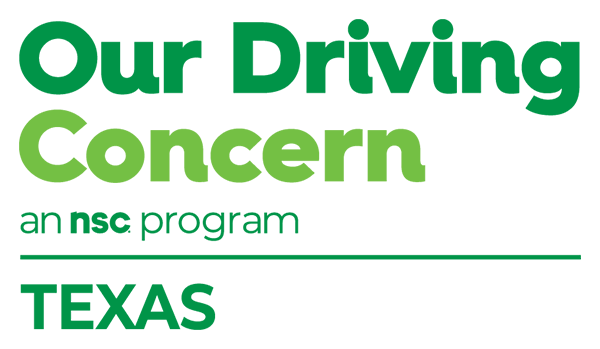Walk with Us
People walk for a variety of reasons. Some count steps as part of a workplace walking challenge or a healthy lifestyle routine. Others walk from the car to the office, or down the street to grab a bite during the lunch hour. Because walkers are not equipped with all the safety features that come standard in vehicles – seat belts, airbags and bumpers – they are some of our most vulnerable road users.
Join us as we work to make our roads safer for everyone during National Pedestrian Safety Month in October. Use these tools to raise awareness of pedestrian safety, remind drivers to watch out for pedestrians at all times and engage your coworkers in safety:
- Our Driving Concern: Posters, teaching tools (including an infographic focusing on parking lot safety) and a quiz to test everyone’s pedestrian safety knowledge
- Texas Department of Transportation Safety Campaign: Safety tips for drivers and walkers to display on a bulletin board or post on your intranet, and a variety of downloads, including videos, info cards and posters
- National Highway Traffic Safety Administration: Fact sheets, videos, safe walking tips for kids, and a resource guide that introduces the Safe System approach, which focuses on safer people, safer speeds and roads, safer vehicles and post-crash care (all available in English and Spanish)
Last year, there were 5,366 crashes in Texas involving pedestrians, according to TxDOT. That’s nearly 15 crashes every day:
- 841 people died, a 15% increase in pedestrian fatalities over 2020
- 1,470 people were seriously injured – four every day
Across the state, pedestrians now account for one in five traffic fatalities. TxDOT data indicates four factors contribute to most pedestrian crashes:
- Driver distraction
- Speeding
- Drivers failing to yield the right-of-way to pedestrians
- Pedestrians failing to yield the right-of-way to vehicles
Let’s make use of the tools at our disposal to create positive change.

Hop on the Safety Bus
During School Bus Safety Week (Oct. 17-21), there are a number of ways for you to engage parents and caregivers on your team.
Post these safety tips on a public bulletin board at your location or share digitally:
- Stop for school buses displaying flashing red lights and an extended stop arm, and never pass a stopped bus; there could be pedestrians you cannot see crossing in front of the bus
- Flashing yellow lights indicate a bus is preparing to stop and load or unload children; slow down and prepare to stop your vehicle, too
- Buses are hard to see around and often travel at slower speeds; increase following distance so you have time to stop when the bus stops
- Buses stop at all railroad crossings; drive distraction-free and be prepared to wait behind the bus at railroad crossings
Of course, safety is a core value that you uphold 24/7, not just for one week in October. You can work to improve your driver safety scores year-round by making use of these free resources from the Our Driving Concern team:
- Driver Behavior Micro E-Learning: These five- to seven-minute lessons are compatible with mobile devices. When your drivers complete all five modules, they will receive a certificate of completion. Get started here.
- Safety Huddle Sheets: Download these sheets and use them to develop safety talks on topics ranging from distracted driving and intersections to backing up and pedestrians.
- Driving Safety Games: Who said safety can’t be fun? We’ve created a game console you can use to test your employees individually or in a group setting. There are six games: Distraction Action, Driving Basics Bingo, Impairment Jeopardy, Night Owl, Speedway and Stat Attack. Try them in your workplace.
Less than 1% of all traffic fatalities in the U.S. involve school buses, according to research from the NHTSA, so it’s no wonder school buses are considered the safest vehicles on the road. But if each of us make safer choices while driving, we can bring that number to zero.

